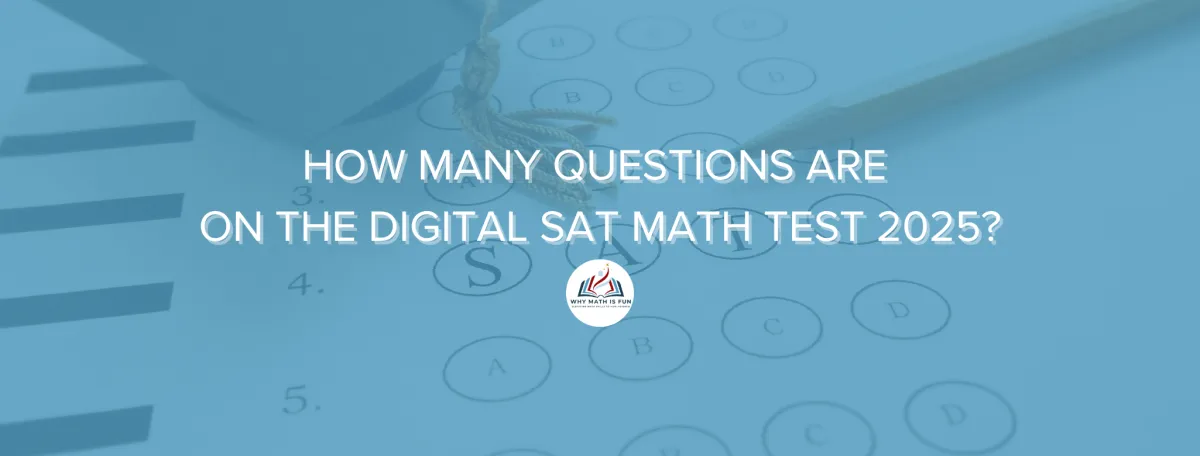
How many questions are on the digital SAT math test 2025?
Overview of the SAT and Its Importance for College Admissions
The SAT (Scholastic Assessment Test) is a standardized college admissions exam administered by the College Board, widely recognized by universities across the United States and many international institutions. As of 2025, the SAT has transitioned to a fully digital format, offering a more streamlined, adaptive, and student-friendly testing experience. The test is designed to measure a high school student's readiness for college by assessing core academic skills in Reading and Writing as well as Mathematics. The SAT is now shorter—lasting around 2 hours and 14 minutes—and includes new digital features such as an on-screen graphing calculator, adaptive question modules, and faster score delivery.
Although the role of standardized testing in college admissions has evolved—with some schools adopting test-optionalor test-flexible policies—SAT scores remain an important part of the application for many students. Strong SAT performance can help bolster an application, especially when paired with a competitive GPA, meaningful extracurricular activities, leadership roles, and compelling personal essays. In some cases, high SAT scores can also qualify students for merit-based scholarships or honors programs.
Whether required or optional, the SAT continues to serve as a valuable tool for students to showcase their academic strengths and stand out in a competitive admissions landscape.
Introduction to the SAT Math Section and Its Significance

The digital SAT Math section lasts 70 minutes and consists of 44 questions, divided into two modules of 22 questions each, with 35 minutes allocated per module. The test is multistage adaptive, meaning the difficulty level of the second module is based on a student’s performance in the first. This adaptive format allows for a more precise measurement of a student’s math ability in a shorter amount of time.
Questions on the digital SAT Math test come in two formats: multiple-choice questions, where students choose one correct answer from four options, and student-produced response (grid-in) questions, where students must calculate and enter their own answers. Unlike the previous paper-based test, a calculator is allowed for all math questions. Students may use their own approved calculator, or take advantage of the built-in graphing calculator available directly within the testing platform.
While the fundamental content of the Math section remains largely unchanged, the digital version includes several important updates. Notably, there is a reduction in the length and complexity of word problems, with a focus on more concise, accessible wording. This change is designed to reduce reading load and allow students to concentrate more on problem-solving.
The SAT Math section continues to assess students on essential areas such as algebra, problem-solving and data analysis, advanced math (including functions and quadratic equations), and limited geometry and trigonometry. These topics are chosen for their relevance to college-level coursework and practical application in a wide range of academic and career paths.
Distribution of Questions Across Different Math Topics

The SAT Math section covers a broad spectrum of mathematical concepts, including:
1. Algebra: This involves analyzing, solving, and creating linear equations, inequalities, and systems of equations.
2. Advanced Math: Students must demonstrate proficiency in skills necessary for advancing to more complex math courses, including analyzing, solving, interpreting, and creating various types of equations.
3. Problem-Solving and Data Analysis: This section focuses on applying quantitative reasoning to ratios, rates, and proportional relationships, as well as analyzing and interpreting one- and two-variable data.
4. Geometry and Trigonometry: Students will solve problems related to perimeter, area, volume, angles, triangles, trigonometry, and circles.
Strategies for Approaching the SAT Math Section
Effective time management is crucial for success on the SAT Math section. Strategies such as allocating time per question based on difficulty, skipping and returning to challenging questions, and pacing oneself throughout the section can help maximize performance.
Each type of math problem on the SAT requires specific approaches and techniques. Providing tips on problem-solving strategies, such as translating word problems into mathematical equations, using diagrams for geometry problems, and checking calculations for accuracy, can empower students to approach problems systematically.
Practice with official SAT practice tests and questions not only familiarizes students with the test format and question types but also helps build confidence and proficiency in applying mathematical concepts. Encouraging consistent practice and review of mistakes can significantly enhance performance on the SAT Math section.
Additional Resources and Preparation Tips
To make the most of the digital SAT Math course, take advantage of these helpful resources:

Click here for assistance with your digital SAT math test

digital sat math test for dummies pdf Click here!
FTC Disclaimer: This post may contain affiliate links. We may earn a small commission from qualifying purchases when you click a link at no extra cost to you. As an Amazon Associate, I earn from qualifying purchases at no cost to you. The thoughts expressed are my personal opinions.
